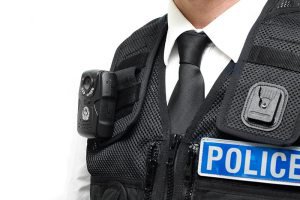
By Nancy La Vigne
Special To The Washington Post
Body cameras aren’t new, but since the spate of violent encounters between police and unarmed citizens — Michael Brown, Chris Lollie, Eric Garner, Marlene Pinnock and others — they’ve been at the center of our debate about how to reduce these types of incidents.
Police in Washington and New York City have instituted body-camera pilot programs, Maryland Republican Gov. Larry Hogan signed a law last month enabling their use in his state, and Sen. Tim Scott, R-S.C., is making a push for body-camera funding in Congress. These efforts will sometimes help, but they’re not a cure-all. Here are five myths about the power of body cams.
1. Body cams get the whole story.
When Ferguson, Mo., police started wearing body cameras after the shooting death of Michael Brown, then-police Chief Tom Jackson said “the quality is good” with regard to the images his officers were recording. Last year’s video of an Albuquerque police officer firing eight shots at a suspect is seared in the public conscience — it shows Officer Brian Pitzer shooting Joaquin Ortega as he fled.
But rarely do body-worn cameras capture police-citizen interactions with such a high degree of clarity.
Body cams have the same limitations as stationary public surveillance cameras, or CCTV (closed-circuit television), including the camera’s viewshed, available lighting and low-visibility weather conditions. Another factor that compromises precision is the camera-wearer’s movement, which can mask or distort incidents on playback.
In interviews with police investigators as part of a 2011 Urban Institute evaluation of CCTV use in three U.S. cities, my colleagues and I found that poor-quality footage was a significant barrier to the technology’s utility.
And cameras capture different details depending on where they are positioned on the officer, who typically has discretion in choosing whether the camera is mounted on the head, chest or shoulder. The AXON camera produced by Taser, by far the largest vendor of body cameras in the country, offers “multiple on-body mounting positions.” The model policies promoted by the Justice Department are silent on the topic of where the camera sits.
Like fixed surveillance cameras, body-worn lenses capture only the perspective of the officer and the direction in which he or she is facing, leaving out such critical context as the presence and actions of others outside the frame. They rarely capture the proverbial “smoking gun” and thus are unlikely to replace witness testimony. In many cases, they’re a complement to it at best.
Read the full story at the link below.
Source: washingtonpost.com
